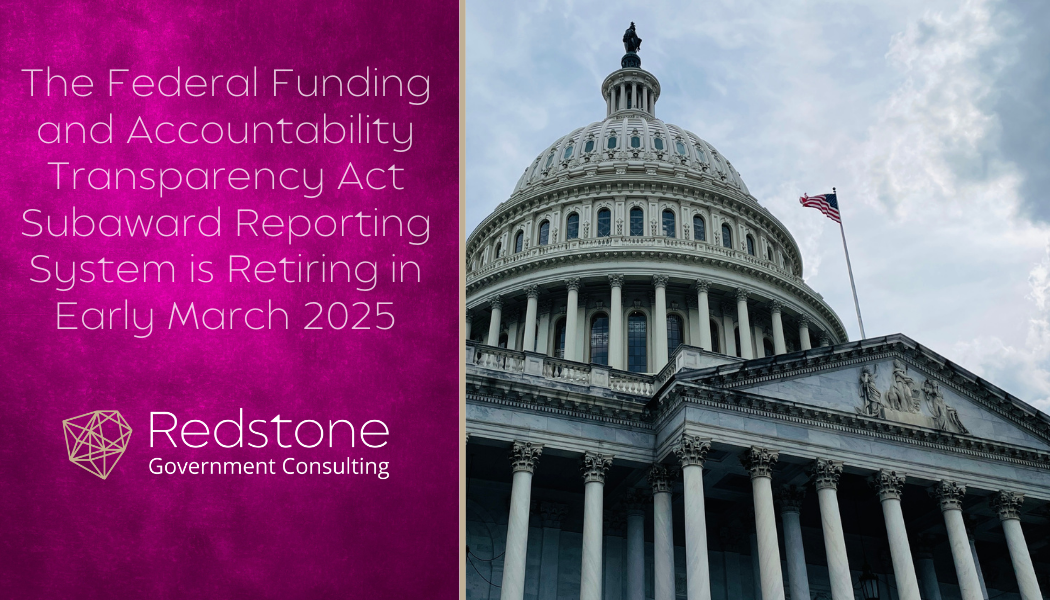The Federal Funding and Accountability Transparency Act (FFATA) requires prime contractors to report their first-tier subcontracts and grant recipients to report their first-tier subawards using the Federal Funding and Accountability Transparency Act Subaward Reporting System website.
Topics: Employee & Contractor Compensation, Contracts & Subcontracts Administration, DFARS Business Systems, Contractor Purchasing System Review (CPSR), System Award Management (SAM), Government Regulations, Federal Acquisition Regulation (FAR)
Again, this year our friendly DCAA auditors have taken up the government requirement to calculate and publish annually the new compensation cap as provided for in Section 702 of the Bipartisan Budget Act of 2013 (BBA; Pub. L. 113-67), dated December 26, 2013. The 2025 compensation cap amount is $671,000. Below we have provided the compensation caps going back to 2019.
Topics: Proposal Cost Volume Development & Pricing, Employee & Contractor Compensation, Incurred Cost Proposal Submission (ICP/ICE), DCAA Audit Support, Government Regulations, Federal Acquisition Regulation (FAR)
It is no secret that money plays a significant role in attracting, motivating, and retaining employees; however, recent studies and our experience show that a holistic approach to total compensation is key to success in today’s market. A 2016 study by the Society for Human Resources Management (SHRM) found that pay was the second most important factor of job satisfaction. Many employers focus on the numbers behind the dollar sign, but total compensation goes beyond the paycheck. Total compensation, as defined by Indeed, refers to the total value an organization offers an employee in exchange for their work, including their salary and any benefits or incentives. In addition to these elements, intangible factors like company culture, engagement, wellness, development, and recognition should also be considered as features of total compensation.
Topics: Employee & Contractor Compensation, Human Resources, Office of Federal Contract Compliance Programs
Besides the potential tax benefits of an Employee Stock Ownership Plan (ESOP), the National Defense Authorization Act (NDAA) for Fiscal Years 2022 and 2024 has introduced an additional benefit for employee-owned businesses contracting with the Department of Defense (DoD). A pilot program that will allow for the award of follow-on contracts without competition.
Topics: Compliant Accounting Infrastructure, Employee & Contractor Compensation, Contracts & Subcontracts Administration, Government Regulations, Federal Acquisition Regulation (FAR)
For cost accounting under Federal government contracts, including your contracts that are not CAS covered, deferred compensation must be measured based on the requirements of CAS 415. FAR 31.205-6(k) requires that the cost of all deferred compensation, other than pension costs, be measured, assigned, and allocated in accordance with CAS 415, Accounting for the Cost of Deferred Compensation.
Topics: Compliant Accounting Infrastructure, Employee & Contractor Compensation, Human Resources, Government Regulations, Cost Accounting Standards (CAS)
The McNamara-O’Hara Service Contract Act (SCA), aka Service Contract Labor Standards (SCLS), requires contractors and subcontractors on covered contracts to provide specified wages and fringe benefits to covered employees (i.e., “service employees”). While that may sound fairly straightforward, there are many nuances and complexities that can cause great concern and angst when working toward compliance with the SCA. At the top of the list of these administrative burdens is the appropriate distribution of Health and Welfare (H&W).
Topics: Employee & Contractor Compensation, Small Business Compliance, Human Resources, Service Contract Act
Our friendly DCAA auditors have taken up the government requirement to calculate and publish annually the new compensation cap as provided for in Section 702 of the Bipartisan Budget Act of 2013 (BBA; Pub. L. 113-67), dated December 26, 2013. The 2024 cap amount is $646,000. Below, we have provided the compensation caps going back to 2016.
Topics: Employee & Contractor Compensation, Incurred Cost Proposal Submission (ICP/ICE), DCAA Audit Support, Government Regulations, Federal Acquisition Regulation (FAR)
This article is under review as a result of EO 14173, Ending Illegal Discrimination and Restoring Merit-Based Opportunity, signed by President Trump on January 21, 2025. As we await further information from OFCCP and the courts, please reference this article for current status and action items.
Over the last few years, with the uber-competitive labor market and evolving landscape of remote and hybrid work arrangements, I've had many conversations (some feeling more like counseling sessions!) with clients who had become very tired and frustrated with the rising compensation and work-related demands of candidates. These conversations included questions like: When will we see the labor market settle? How can we be profitable when paying rates such as this? What makes sense? Is there any way this would be considered reasonable? Will that be fair to my long-term employees? What we found is those with established and well-structured compensation plans were able to respond to these questions and the challenging scenarios they faced much more efficiently and effectively than those who did not.
Topics: Employee & Contractor Compensation, Incurred Cost Proposal Submission (ICP/ICE), DCAA Audit Support, Government Regulations, Federal Acquisition Regulation (FAR)
In January of this year (2021), we told you that the United States Department of Labor (DOL) under the Trump administration announced a final rule clarifying the standard for whether a worker is an employee or an independent contractor under the Fair Labor Standards Act (FLSA). This rule reaffirmed the “economic reality” test as the primary factor for determining employee status. The final rule was published in the Federal Register on January 7, 2021 and the Rule was set to have an effective date of March 8, 2021.
Topics: Compliant Accounting Infrastructure, Employee & Contractor Compensation, Human Resources










